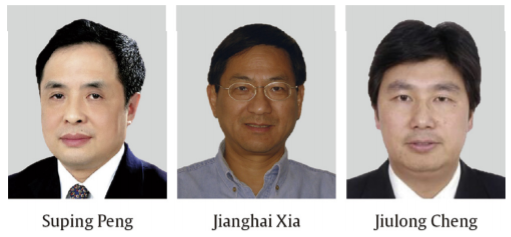
Urbanization is an inevitable trend in the modernization of human society. The Chinese government has put forward a goal for urbanization in China in 2014, which focuses on the three tasks,y each containing 100 million people. In the next 10 years, China’s urbanization process will occur at the fastest rate in her history. Earth’s near surface, which extends from the ground surface to a depth of nearly 100 m, is the most complex, sensitive, and fragile part of the planet. The near surface provides the vast majority of necessary materials, along with substantial space for human living. Therefore, China’s urbanization relies on a ‘‘healthy” and sustainable near surface.
With broad applications in environmental and engineering fields, geophysical techniques are of great significance in the sustainable development of the near surface. Geophysical techniques with high accuracy and high resolution (i.e., centimeter to meter magnitude) are now available to solve various engineering and environmental problems. However, the increasing demands for resources, near-surface space usage, and environmental protection that come with the next wave of China’s urbanization require advanced noninvasive, nondestructive, and environmentally friendly geophysical techniques that can be used in a noisy urban environment and that possess higher accuracy and higher resolution.
To promote the communication of new technical advances, developments, and applications in environmental and engineering geophysics, we have carefully selected six authors and invited them to submit full-length papers for this special issue. These papers are mainly developed from the authors’ extended abstracts from the 7th International Conference on Environmental and Engineering Geophysics. The six papers in this issue cover nearly all the fields of newly developed near-surface geophysical methods and their applications, as follows:
Electromagnetic techniques with high resolution are critical in near-surface applications. In this issue, Jishan He presents a successful example of a high-resolution technique using the wide-field electromagnetic method and the flow field fitting method in order to assess a complicated old goaf and unknown water distribution.
Ground-penetrating radar (GPR) is a popular tool in near-surface geophysics; however, it is limited by its penetrating depth and by uneven ground surfaces in real-world applications. Here, John H. Bradford et al. introduce a reverse-time migration algorithm for GPR data in which the wavefield extrapolation is computed directly from the acquisition surface without the need for datuming. In case studies, the algorithm shows improvement over a processing sequence in which migration is performed after elevation statics.
Active seismic techniques still play an important role in near-surface applications. Edward W. Woolery uses the SH-mode seismic-reflection imaging of earth-fill dams at two sites in the central United States to demonstrate the SH-mode seismic-reflection technique. Imaging the internal structural detail and geological foundation conditions of earth-fill embankment dams can improve the overall subsurface definition needed for remedial engineering in a cost-effective manner.
Passive seismic techniques are receiving increasing attention in the near-surface community, and show great potential for solving environmental and engineering problems in urban environments. In this issue, Feng Cheng et al. demonstrate the feasibility of extending the frequency band of dispersion measurement by simultaneously imposing an active source during continuous passive surface-wave observation. They also show that a short-dura-tion (i.e., within 10 min) passive surface-wave survey is feasible and stable in an urban environment using the multichannel analysis of passive surface waves method.
Source location is a key element of such techniques, and its accuracy has a great impact on the performance of the techniques. Guangdong Song et al. present their results on the effects of geophone distribution, first-arrival time picking, and the velocity model on mine microseismic source location, and propose measures to influence these factors.
Case studies are presented in this issue that show the importance of near-surface geophysics in infrastructure construction and environmental protection. Jeffrey G. Paine et al. present a case study of spatial discrimination of complex, low-relief Quaternary siliciclastic strata using airborne lidar and near-surface geophysics, and propose an optimal approach to identify lithologic and stratigraphic distribution in low-relief coastal-plain environments.
We would like to thank the authors of each of the papers in this issue for their effort and time in preparing these manuscripts. We also thank the many peer reviewers, who have had a significant impact on the quality of this issue.













 京公网安备 11010502051620号
京公网安备 11010502051620号




